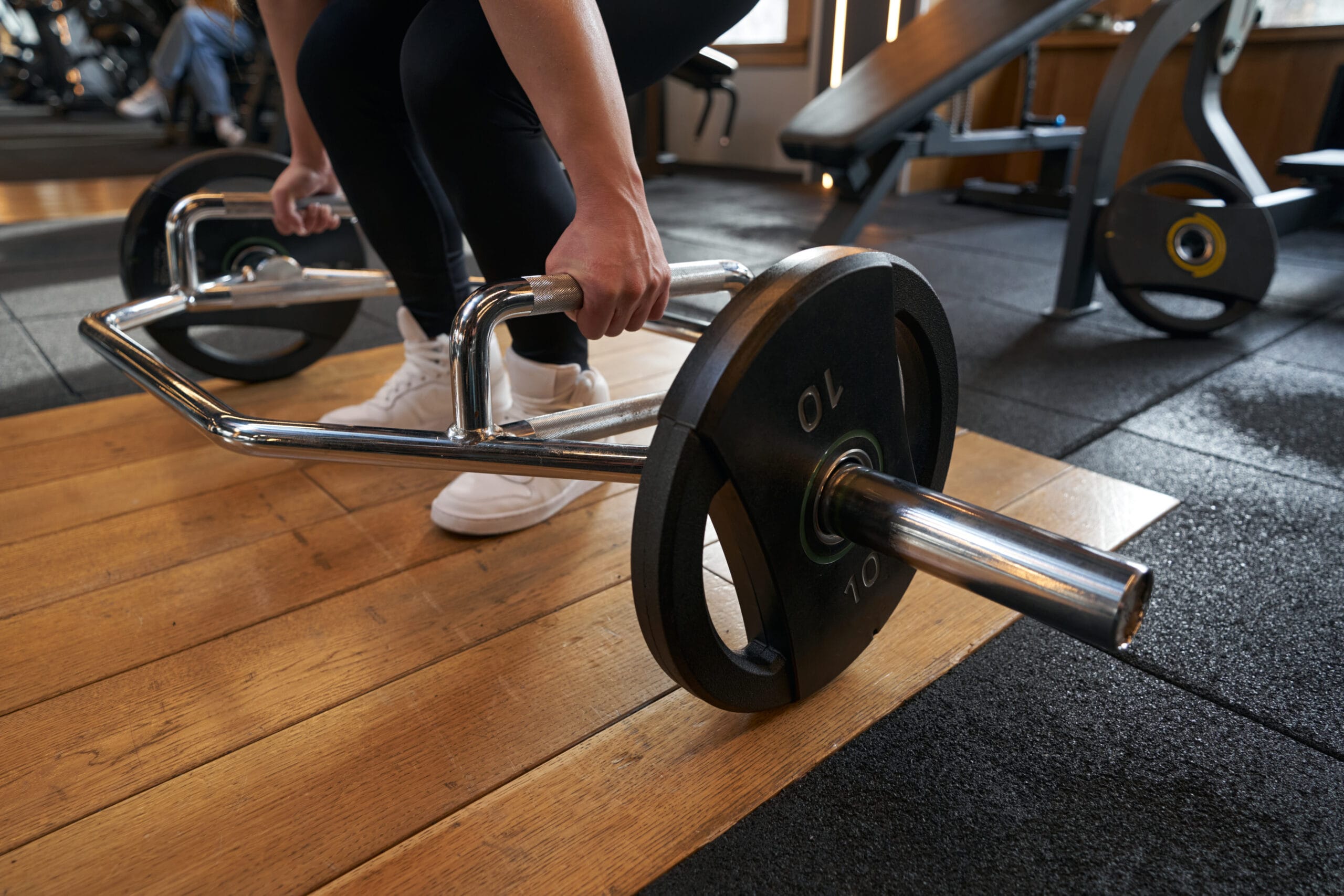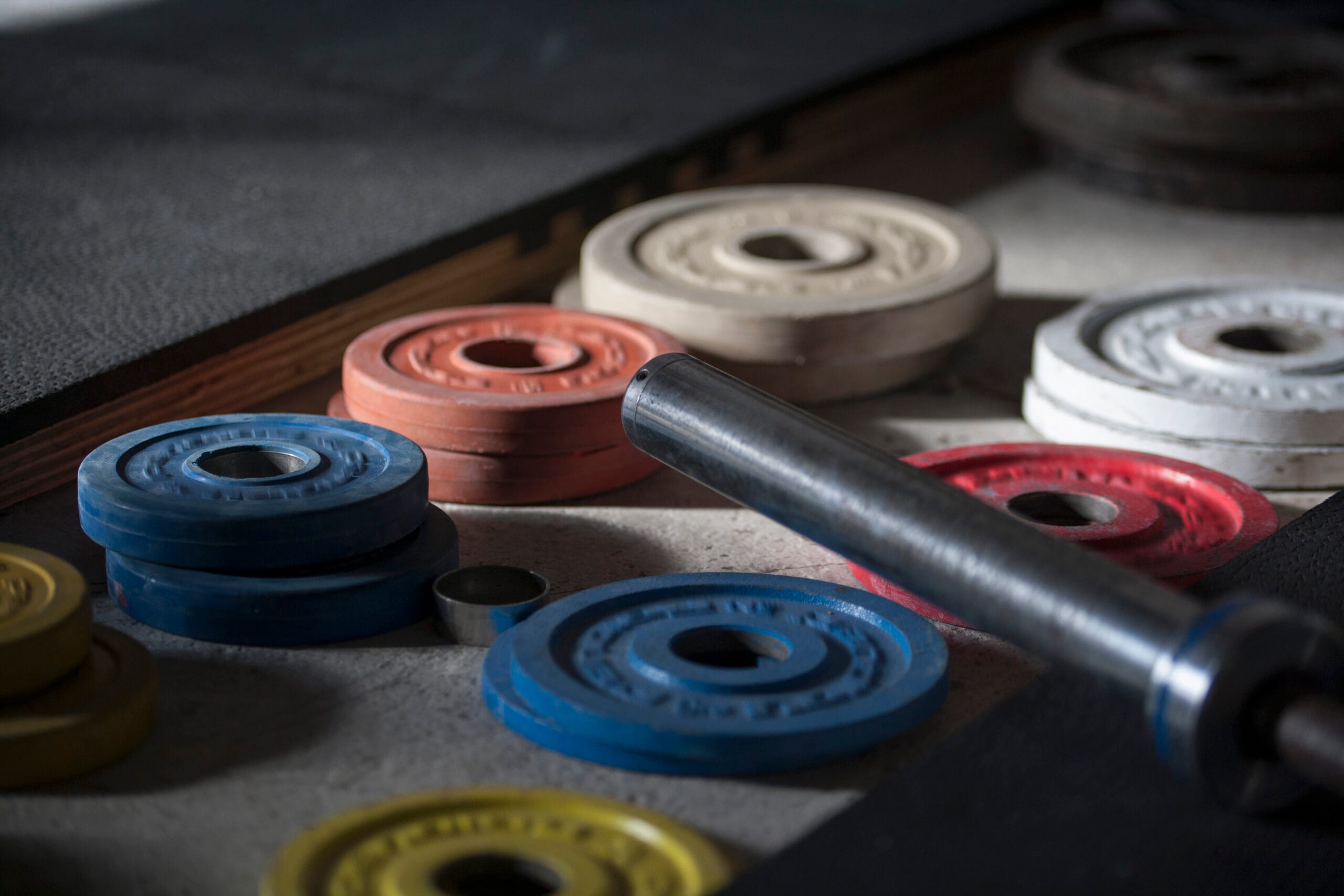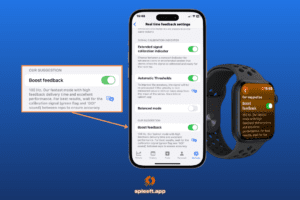The deadlift is a cornerstone of strength training, celebrated for its ability to build power, strength, and athletic performance. While conventional and Romanian deadlifts often dominate the conversation, the Trap Bar Deadlift (TBDL)—performed using a hexagonal barbell—offers a unique and highly effective alternative. When combined with Velocity-Based Training (VBT), the Trap Bar Deadlift becomes an even more powerful tool for athletes, fitness enthusiasts, and anyone looking to optimize performance while minimizing injury risk. [1]
In this blog, we’ll explore the benefits of the Trap Bar Deadlift, compare it to other deadlift variations, and explain how incorporating VBT into your routine can maximize results. We’ll also dive into the scientific evidence behind this versatile movement and its applications for strength, power, and injury prevention. [1]
DOWNLOAD SPLEEFT APP NOW FOR iOS, ANDROID AND APPLE WATCH!
What Is a Trap Bar Deadlift?

The Trap Bar Deadlift, also known as the Hex Bar Deadlift, uses a hexagonal-shaped barbell with handles on either side. This design allows the lifter to step inside the frame, ensuring a neutral grip and a more ergonomic lifting position. Unlike a conventional straight barbell deadlift, where the weight is placed in front of the body, the Trap Bar centers the load around the athlete’s body. [2]
This structural difference leads to several distinct advantages:
Reduced lower back strain
Improved lifting mechanics for beginners
Greater emphasis on quadriceps activation
Easier handling of heavier loads compared to conventional deadlifts
Scientific studies support these claims. Research comparing the Trap Bar and straight bar deadlifts reveals that the Trap Bar allows for significantly higher peak power, force, and velocity during lifts, making it ideal for athletes who prioritize explosive strength.
Key Benefits of Trap Bar Deadlifts
1. Enhanced Power and Strength Development
The Trap Bar Deadlift generates higher peak power and velocity compared to straight bar deadlifts. A study published in the Journal of Strength and Conditioning Research found that athletes lifting with a hex bar achieved greater force and power output at both submaximal and maximal loads. This makes the Trap Bar Deadlift particularly effective for athletes in sports requiring explosive power, such as football, basketball, and sprinting. [4]
2. Improved Lifting Mechanics
The hexagonal design promotes better lifting mechanics by reducing the forward lean of the torso, thus minimizing stress on the lumbar spine. This makes the Trap Bar Deadlift a safer alternative for beginners and taller lifters who may struggle to maintain proper alignment during conventional deadlifts.
3. Reduced Lower Back Strain
Unlike conventional deadlifts, the Trap Bar Deadlift significantly decreases the torque placed on the lumbar spine. Research has consistently shown lower peak moments at the lumbar spine during Trap Bar Deadlifts, making it a safer option for long-term training.
4. Quadriceps Activation
While the Trap Bar Deadlift still engages the posterior chain (hamstrings, glutes, and erector spinae), it places a greater emphasis on the quadriceps. This can be advantageous for athletes looking to improve their sprinting, jumping, or overall leg strength.
5. Versatility for All Training Levels
The Trap Bar Deadlift is highly adaptable, making it suitable for everyone from beginners to advanced lifters. Beginners benefit from its safer mechanics and reduced learning curve, while advanced lifters can use the Trap Bar to diversify their pulling movements and build strength in a more controlled manner.
Trap Bar Deadlift vs. Conventional Deadlift
Let’s break down the primary differences between these two deadlift variations:
| Feature | Trap Bar Deadlift | Conventional Deadlift |
|---|---|---|
| Load Distribution | Centered around the body, reducing forward lean | Weight positioned in front of the body |
| Spinal Load | Lower spinal torque and lumbar strain | Higher stress on the lower back |
| Muscle Emphasis | Greater quadriceps activation | Emphasizes hamstrings, glutes, and lower back |
| Range of Motion | Slightly reduced due to raised handles | Greater range of motion |
| Ideal For | Beginners, taller athletes, injury prevention | Powerlifters, those targeting the posterior chain |
The Trap Bar Deadlift’s balanced load distribution and reduced lumbar strain make it a preferred choice for athletes and recreational lifters seeking a safer alternative without sacrificing strength gains. [2]
Incorporating Velocity-Based Training (VBT) with Trap Bar Deadlifts
One of the most exciting advancements in strength training is the integration of Velocity-Based Training (VBT). This method uses real-time feedback from devices such as Spleeft App to monitor bar velocity and ensure optimal performance during every lift. Combining VBT with the Trap Bar Deadlift offers several unique advantages [8]:
1. Real-Time Feedback
VBT devices measure key performance metrics such as bar velocity, force, and power output. This allows athletes to adjust their intensity in real time, ensuring they stay within the desired velocity range for strength, power, or hypertrophy goals.
2. Fatigue Management
Training with a velocity threshold helps prevent overtraining and reduces the risk of injury. When the device detects a significant drop in bar velocity, it signals the athlete to stop the set, allowing for adequate recovery.
3. Objective Progress Tracking
Using VBT, lifters can monitor improvements in power, velocity, and force over time. This data-driven approach ensures progress is measurable and tailored to the athlete’s goals.
4. Improved Power Output
As studies show, the Trap Bar Deadlift already promotes higher peak power and velocity compared to conventional deadlifts. When combined with VBT, athletes can optimize their velocity and explosiveness to maximize results.
Practical Tips for Using VBT with Trap Bar Deadlifts

Set Clear Goals: Determine whether your focus is on power, strength, or hypertrophy, and adjust the velocity range accordingly. For example:
Power: 0.75–1.0 m/s
Strength: 0.4–0.6 m/s
Hypertrophy: 0.6–0.75 m/s
Track Every Rep: Use a VBT device like Spleeft App to monitor each repetition and ensure consistent performance.
Adjust Load Dynamically: Based on real-time feedback, modify the weight to stay within your target velocity range.
Integrate into Your Routine: Start with 2–3 Trap Bar Deadlift sessions per week, incorporating VBT to fine-tune your training.
Applications of Trap Bar Deadlifts for Athletes
Athletes across a variety of sports can benefit from incorporating Trap Bar Deadlifts into their training. Here’s how it can enhance performance in different disciplines:
1. Improving Vertical Jump and Explosiveness
The Trap Bar Deadlift emphasizes quadriceps activation and promotes higher peak power output. These factors directly translate to explosive movements like vertical jumps, sprint starts, and broad jumps.
2. Enhancing Sprint Velocity
Sprint performance is heavily influenced by posterior chain strength. While the Trap Bar Deadlift does not target the posterior chain as heavily as the conventional deadlift, it still contributes to improved ground reaction force and velocity.
3. Supporting Injury Prevention
The Trap Bar’s ergonomic design minimizes strain on the lower back and shoulders, making it ideal for athletes recovering from injuries or those with mobility limitations.
4. Building General Strength for Contact Sports
Sports like rugby, football, and wrestling demand total-body strength and resilience. The Trap Bar Deadlift builds a solid foundation by targeting key muscle groups such as the quadriceps, hamstrings, and traps.
Sample Training Program with Trap Bar Deadlifts and VBT
Here’s an example of how to incorporate Trap-Bar Deadlifts into a weekly training program that leverages Velocity-Based Training for maximum results:
Day 1: Power Development
Trap Bar Deadlift (VBT): 4 sets of 3 reps at 60-70% 1RM (target velocity: 0.75–1.0 m/s)
Bulgarian Split Squats: 3 sets of 8 reps per leg
Box Jumps: 3 sets of 6 reps
Core Stability (Plank Variations): 3 sets of 30–60 seconds
Day 2: Strength Focus
Trap Bar Deadlift (Heavy Load): 4 sets of 5 reps at 80-85% 1RM
Barbell Bench Press: 4 sets of 5 reps
Pull-Ups: 4 sets to failure
Farmer’s Walk: 3 sets of 40 meters
Day 3: Recovery and Mobility
Foam Rolling and Stretching: 10–15 minutes
Light Romanian Deadlifts (Trap Bar): 3 sets of 12 reps
Bodyweight Lunges: 3 sets of 15 reps per leg
Day 4: Velocity and Agility
Trap Bar Velocity Deadlift (VBT): 5 sets of 3 reps at 50–60% 1RM (target velocity: 0.8–1.2 m/s)
Sprint Intervals: 6 x 30 meters
Med Ball Throws: 4 sets of 8 reps
Core Rotations (Cable or Band): 3 sets of 12 reps per side
Why the Trap Bar Deadlift Deserves a Place in Your Program
The Trap Bar Deadlift is more than just a safer alternative to the conventional deadlift—it’s a powerful tool for building strength, power, and athletic performance. Whether you’re a beginner looking to learn proper lifting mechanics or an advanced athlete aiming to refine your explosiveness, the Trap Bar Deadlift delivers on all fronts. [3]
When combined with Velocity-Based Training and tools like Spleeft App, this exercise becomes even more effective, allowing you to track performance in real time, prevent overtraining, and achieve consistent progress. By incorporating the Trap Bar Deadlift into your routine, you’ll not only reduce the risk of injury but also unlock new levels of strength and performance.
Ready to take your training to the next level? Download Spleeft App today and start maximizing your results with Trap Bar Deadlifts!
References
- Swinton, P. A., Stewart, A., Agouris, I., Keogh, J. W., & Lloyd, R. (2011). A Biomechanical Analysis of Straight and Hexagonal Barbell Deadlifts Using Submaximal Loads. Journal of Strength and Conditioning Research, 25(7), 2000-2009.(Compares the biomechanical differences between straight bar and hexagonal bar deadlifts, highlighting the advantages of the Trap Bar Deadlift in terms of strength and power).
- Camara, K. D., Coburn, J. W., Dunnick, D. D., Brown, L. E., Galpin, A. J., & Costa, P. B. (2016). An Examination of Muscle Activation and Power Characteristics While Performing the Deadlift Exercise with Straight and Hexagonal Barbells. Journal of Strength and Conditioning Research, 30(5), 1183-1188.(Examines muscle activation and power characteristics during the hexagonal barbell deadlift, highlighting its superiority in the production of force and speed).
- García-Ramos, A., Haff, G. G., Pestaña-Melero, F. L., Pérez-Castilla, A., Rojas, F. J., Gregory Haff, G., & Jaric, S. (2018). Feasibility of the 2-Point Method for Determining the Load-Velocity Relationship During the Hexagonal Barbell Deadlift Exercise. Sports Biomechanics, 17(3), 303-314.(Explores the load-velocity relationship in the Trap Bar Deadlift and its application in speed-based training).
- Weakley, J., Wilson, K., Till, K., Banyard, H., Dyson, J., Phibbs, P., & Jones, B. (2020). Show Me, Tell Me, Encourage Me: The Effect of Different Forms of Feedback on Resistance Training Performance. Journal of Strength and Conditioning Research, 34(11), 3157-3163.(Discusses the importance of real-time feedback, such as that provided by VBT devices, for optimizing performance in exercises such as the Trap Bar Deadlift).
- Sánchez-Medina, L., & González-Badillo, J. J. (2011). Velocity Loss as an Indicator of Neuromuscular Fatigue During Resistance Training. Medicine & Science in Sports & Exercise, 43(9), 1725-1734.(Analyzes how the loss of speed during resistance training can be a key indicator of neuromuscular fatigue, relevant for the use of the Trap Bar Deadlift in VBT).
- Zourdos, M. C., Klemp, A., Dolan, C., Quiles, J. M., Schau, K. A., Jo, E., … & Whitehurst, M. (2016). Novel Resistance Training-Specific Rating of Perceived Exertion Scale Measuring Repetitions in Reserve. Journal of Strength and Conditioning Research, 30(1), 267-275.(Introduces a specific scale for measuring repetitions in reserve (RIR), useful for prescribing exercises such as the Trap Bar Deadlift).
- Pareja-Blanco, F., Rodríguez-Rosell, D., Sánchez-Medina, L., Gorostiaga, E. M., & González-Badillo, J. J. (2017). Effect of Velocity Loss During Resistance Training on Athletic Performance. Scandinavian Journal of Medicine & Science in Sports, 27(7), 724-735.(Investigates how loss of velocity during resistance training affects athletic performance, with implications for the use of the Trap Bar Deadlift in VBT programs).
- Spleeft App Documentation (2023). Spleeft: Real-Time Velocity Tracking for Resistance Training [Technical Manual].(Provides details on the capabilities and benefits of the Spleeft app for real-time velocity monitoring during exercises such as the Trap Bar Deadlift).

Iván de Lucas Rogero
MSC Physical Performance & CEO SpleeftApp
Dedicated to improving athletic performance and cycling training, combining science and technology to drive results.





